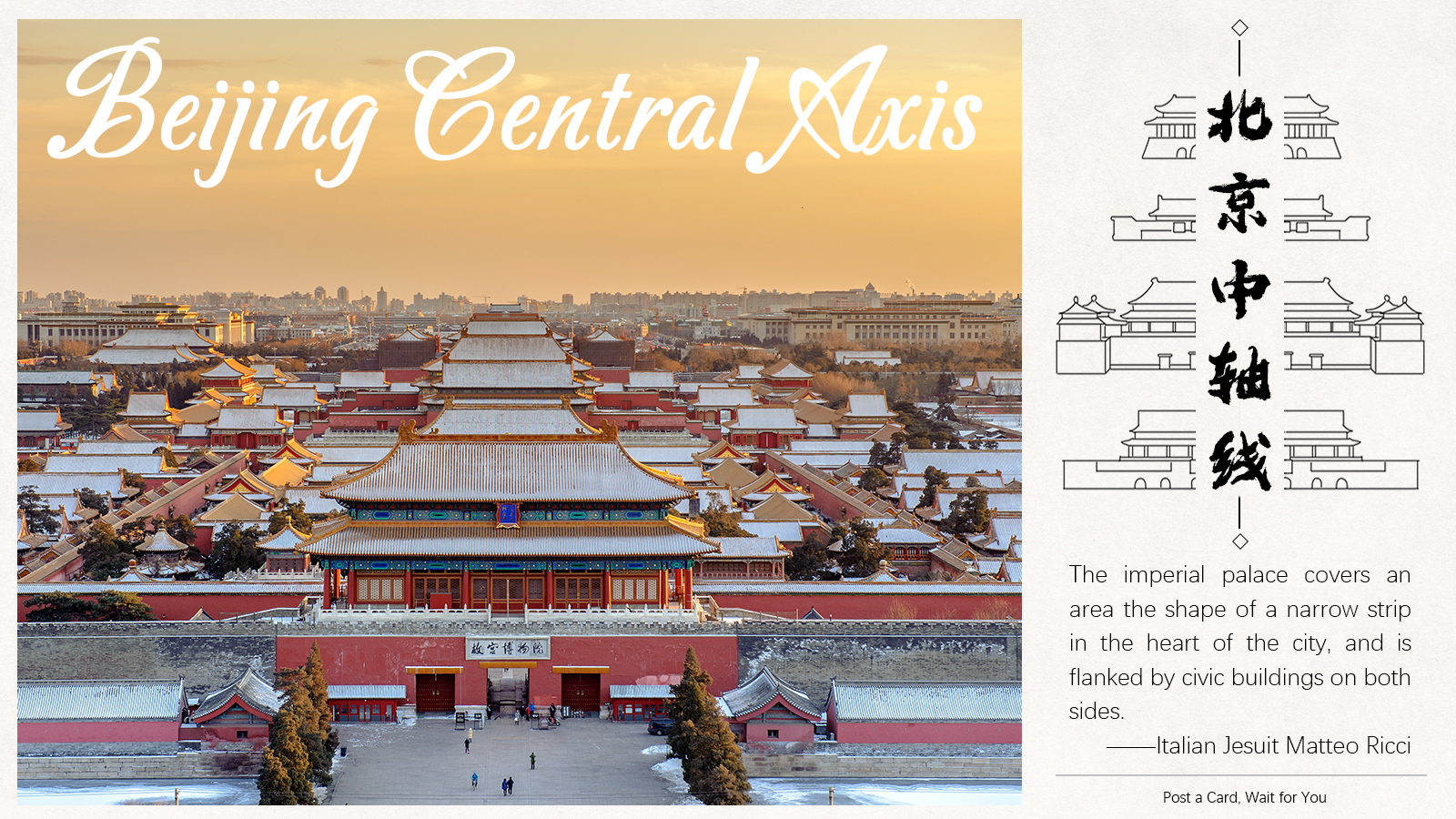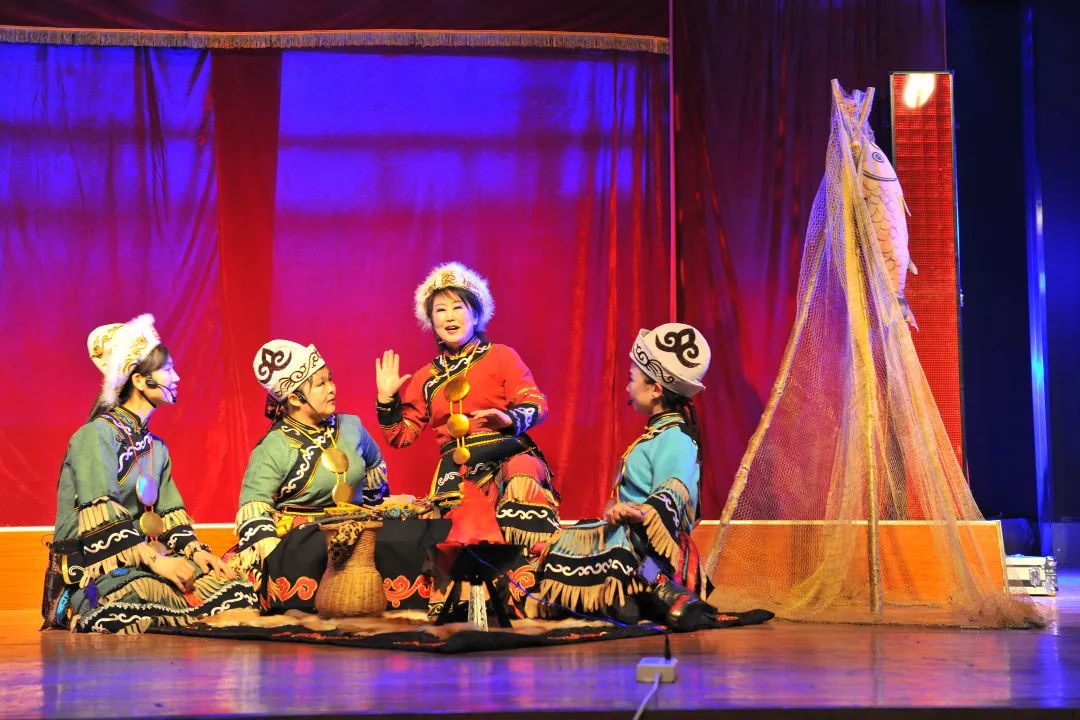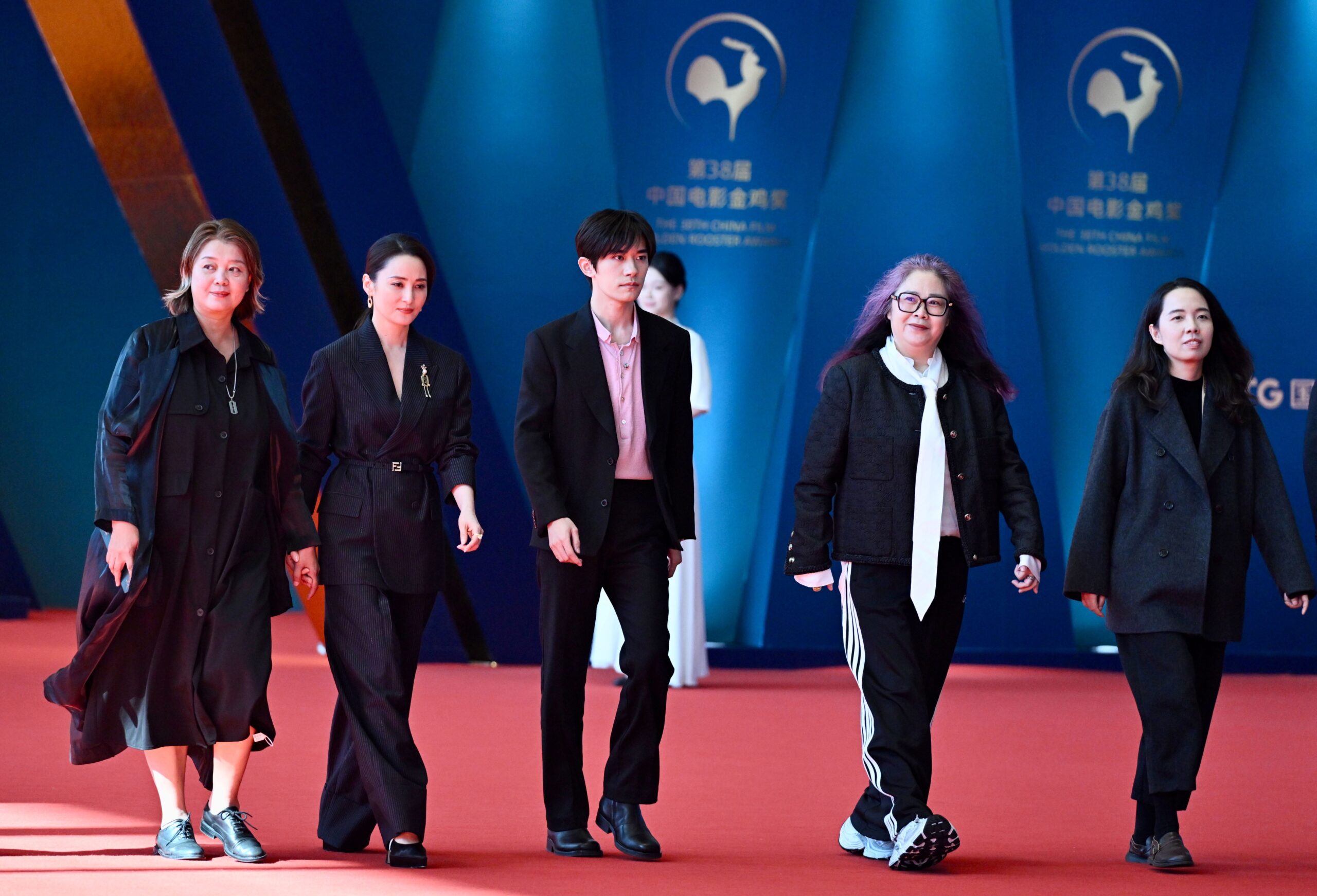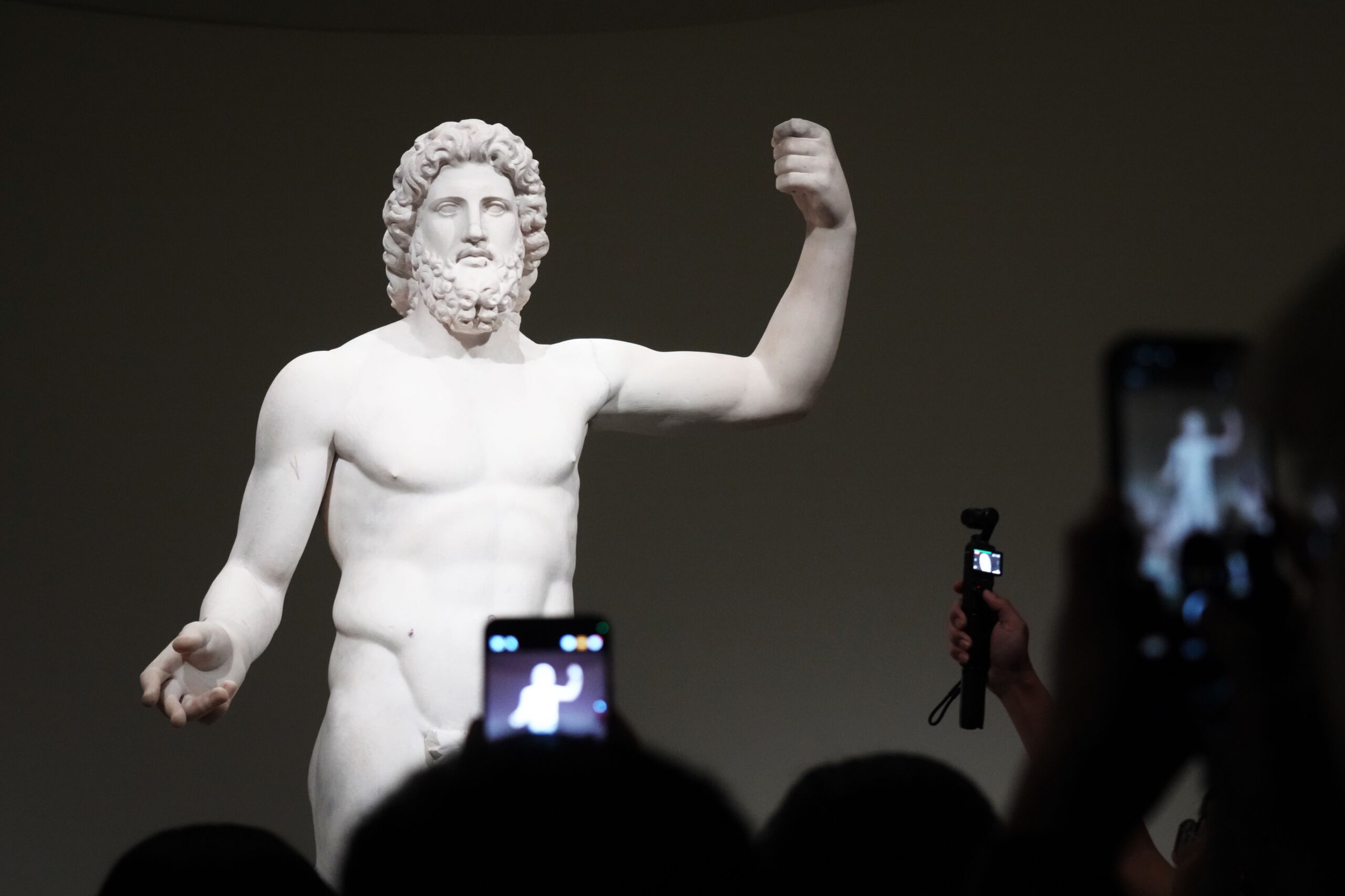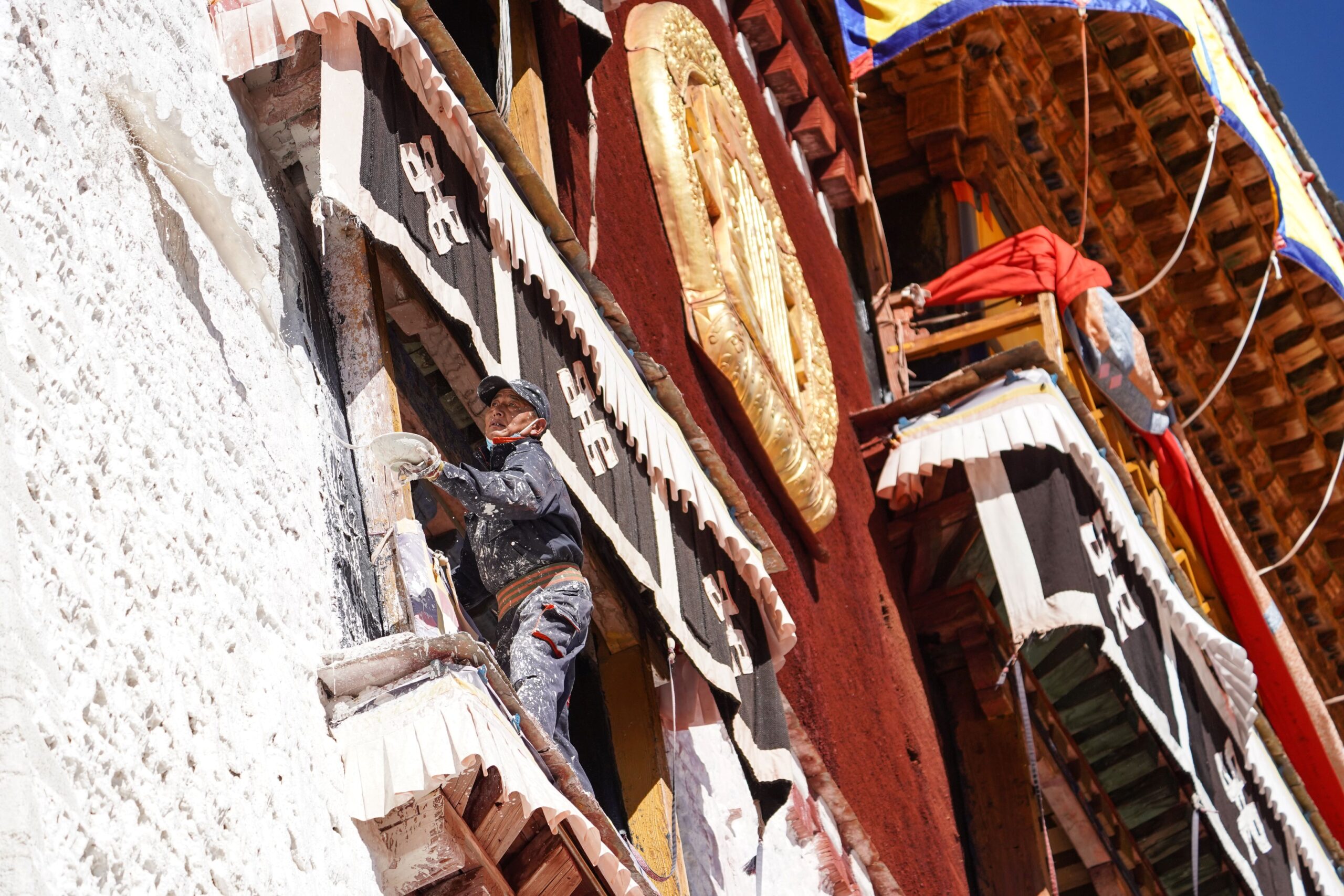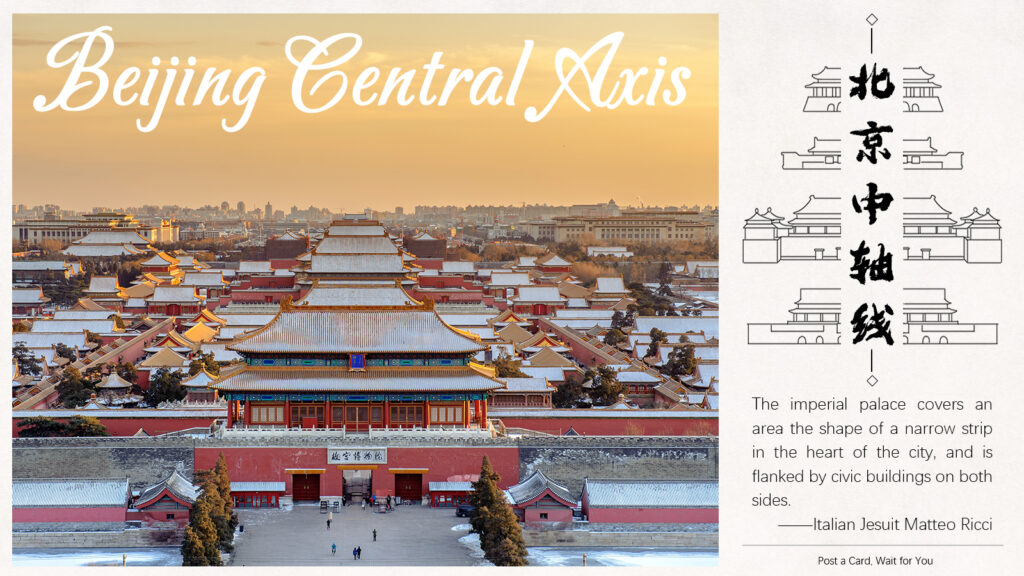
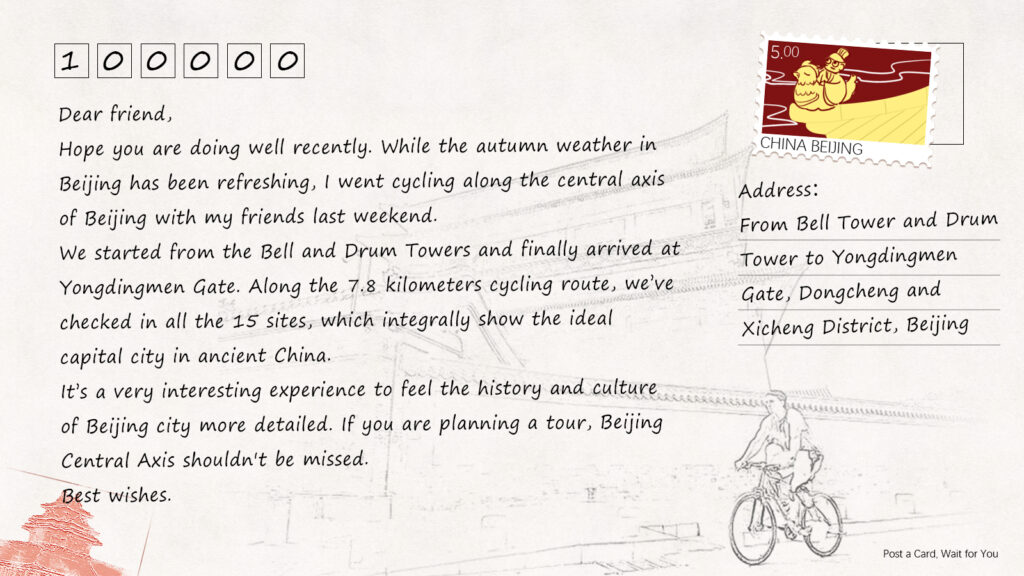
Beijing Central Axis, these three words may be unfamiliar to many people. In fact, China’s renowned architect Liang Sicheng first proposed the notion of it in 1951. He called it “the world’s longest and greatest north-south central axis”. It is composed of 15 heritage sites, including the Forbidden City, the Bell and Drum Towers, Jingshan Hill, and the Temple of Heaven. When you walk through, you may have a deep impression of how the capital city of ancient China developed.
In ancient times, what is today known as the Beijing Central Axis, originated. It connected the Emporer’s home of the Forbidden City to important religious sites ike the Temple of Heaven.
Beijing Central Axis has been in the spotlight on many important international occasions, such as 2008 Beijing Olympics. At the opening ceremony of the Olympics. The dazzling firework display “Giant Footprint” was set off from the Yongdingmen Gate, extending along the Central Axis before arriving at the National Stadium (Bird Nest). On July 27, 2024, Beijing Central Axis was included in UNESCO’s World Heritage List.
Today, modern urban planning has expanded the UNESCO recognised axis further. Moving north from the Forbiden City and you will reach the Birds Nest Stadium and the 2008 Olympic Park.
The historical axis is a major tourist attraction, it is a popular Cycle Route:
Bell and Drum Towers——Jingshan Hill——Forbidden City——Imperial Ancestral Temple——Tian’anmen Square Complex——Zhengyangmen Gate——Southern Section Road Archeological Sites——Yongdingmen Gate
Written by Liu Sha, pictures created by Wang Di. If you liked this article, why not read:Rabbits Have a Reunion on the Moon for Mid-Autumn Festival

